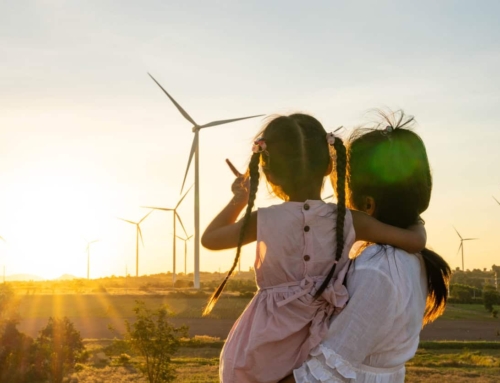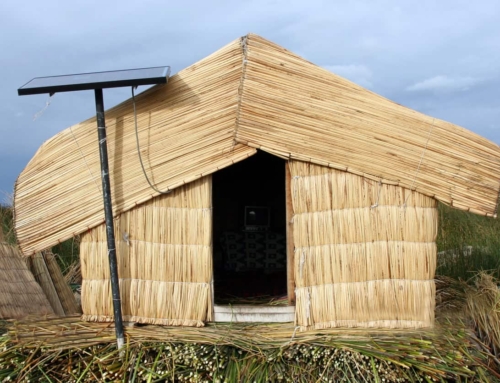90% of Climate Champions Will Read This Post. Here’s Why…*
10 carefully selected people sit around a faux mahogany table for a discussion. Two of the 10 are unknowing experimental subjects. The two have been interviewed on a number of topics and selected because their belief in aliens was very low. The other 8 have been instructed to discuss and profess their belief in aliens. The group of 10 is convened, and at the end of the discussion, a moderator asks each person, beginning with the group of 8 and finishing with the 2 subjects, whether they believe in aliens. What do you think the test subjects said?
Their belief in aliens increased to the point where 75% of test subjects changed their opinion and said they now believed in aliens. This is the effect of social pressure. What went through their minds in the discussion? Not much. There is no empirical evidence for aliens. These subjects simply felt the need to conform to the opinions of their peers. Afterwards, they rationalized their change with arguments given by others. Beliefs given by their peers increased in value. So did trust in the group.
We are a strange species. Given the ability to think and reason, we often give in to the subtle social pressure of the group. We do this all the time. If a few men begin to wear beards and it becomes a fashion statement, then suddenly everyone is trying to grow a beard, including my 16-year-old grandson who looks like an alpaca with mange on his chin. We relent to group pressure because it is a social evolutionary trait that helped us conform and be part of our core tribe. It strengthened our tribe and the response to threats.
There is overwhelming scientific evidence for climate change. It is not a belief system. But evidence has little to do with peoples beliefs, and beliefs drive behavior. So what has social pressure and proof got to do with climate?
Two things…
First, and simply, we need to continue to talk about climate and global overheating. Only a third of Americans discuss global warming with friends and family regularly according to the Yale Climate project. Two thirds of us only rarely discuss it. I won’t get into details, but discussing climate doesn’t mean trying to prove it’s real or citing evidence. It means talking about the threat, our solutions and actions, projects successes, and telling stories about its impact on our personal lives. Talking about climate is particularly important because we are now facing a tidal wave of disinformation from fossil fuel companies and the incoming administration who lie about this important matter on a daily basis.
The second reason is that understanding the concept of social proof can help improve our climate communications. Social proof is when we look to others to determine the appropriate behavior, especially when faced with uncertainty.
I’ve written about the need to create “identity” in the climate movement here and here. We need to sing about our heroes and celebrate the successes we have. One of the primary drivers of creating identity is by creating social proof. It helps satisfy the need to belong in the human psyche.
So I can say, global warming is real, it is dangerous, and we need to do something about it. Or I can say 16,000 scientists just declared that a climate emergency exits. Which is more powerful? I can say that Tesla’s are good for the environment. Or I can say how they are breaking sales records, because they are fast and cool, and anyone who drives one is a cool kid. We are all moved by some level of the need for acceptance. Note that this also makes it hard to go against the prevailing social standard. For example, try bringing up global warming in a group of conservatives, or wearing a MAGA hat in a group of liberals. (Note, the hat is a physical sign of social proof and group conformity.)
How can we take advantage social proof and social pressure in our climate communications?
1. Citing social proof
Citing social proof is not citing evidence of climate change. There is plenty of empirical evidence for man-made climate change. I see dozens of reports and social media posts telling me that 2024 was the hottest year on record. It was, but so what? It’s depressing. What I don’t see as much are posts on the incredible growth of clean energy. Did you know that California ran their entire energy grid off clean low carbon energy for at least 8 hours a day for 99 days straight this year? Cite more of our successes, please.
When one house on a block puts in solar, it’s a curiosity. When 2 houses add solar, it’s an attention grabber, and when 3 houses do, the whole block will go solar.
Advertisers use social proof to sell their products from customer testimonials and case studies, to influencers and celebrity endorsements, to citing that a company received 4.8 stars from 300+ reviews. In a more subtle approach, Apple promotes the line at their stores for the release of a new phone. (Wow, look at all those people in line. Maybe I should get an Apple phone.)
2. Using inevitability
Inevitability is social proof projected on the future. For example, clean energy is inevitable. EVs are inevitable. Look at their growth curves. Batteries are improving by leaps and bounds. Inevitable. Soon we’ll have EV batteries that have a range of 640 miles! No gas vehicles will ever do this. (Here’s a great example of an inevitability pitch on solid state batteries.) It’s just inevitable.
3. Using scarcity
Scarcity also works like inevitability as social proof, but in the opposite direction. It leverages the principle of the fear of missing out (FMO). We have 10 free energy assessments for our electrification program. Get one before they’re gone. They are going fast. Get your IRA rebate before Trump kills the program.
4. Elevating our heroes
Quick, can you name 3 climate heroes? Greta Thunberg, then…? We need more stories on the who and why of people working on climate solutions. By telling stories about our climate heroes, global and local, we elevate the desire and aspirations of others to also help in our effort. It’s social proof… I want to be like those people. Here are two of my heroes.
5. Bringing others into our circle
We attract others by being passionate and compassionate. In climate organizations, people come for the cause but stay for the people in the organization. Have you been to a climate meeting in person lately? When was the last time you had a beer with your team? While we march for the cause, we are bonded by others and by action. Let’s get together more.
6. Making enemies of our opposition
Ridiculing people is a poor way to attract them. I see lots of cynical and sarcastic posting about the stupidity of those who voted for the opposition. Thinking these people are stupid isn’t helping. You might be angry, but ask how you’d feel to be called stupid.
Demonizing the opposition is a tenet of fundamentalism. It strengthens the group. It creates social proof when the group is in the minority. MAGA conservatives have mastered victimhood and demonizing others. But the trick is being specific about our opposition. If I say that fossil fuels are bad, and we should stop burning them, how will I feel if I have a job in the fossil fuel industry? Instead, what if I say, we should stop subsidizing dirty fossil fuels and their CEO’s. The CEO’s of Exxon and Chevron don’t need another yacht.
7. Creating one mass movement
Public demonstration is one of the most difficult but effective ways to create a sense of social proof and identity. When you see 100,000 people in the street, you can’t help but feel connected even if you don’t know each of them. There hasn’t been a major U.S. climate march since 2017.
Before we send the next email, or hit post, or schedule a zoom meeting, can we ask, “Is this action building identity and connection through social proof?” If we fail to learn this lesson, we are likely to be beamed up and probed.
Thanks for all you do.
We are all connected. Savor the Earth!’™
– Hobie,
L. Hobart Stocking
SkyWaterEarth.com
hobart@skywaterearth.com
*Clickbait aside, this subtitle is shamelessly borrowed from a post by Gil Duran at the Frame Lab. Read his good stuff and subscribe there. And join hundreds of others by getting notifications when I publish my good stuff too. 22 free subscriptions remaining on Substack here. 🙂








Leave A Comment